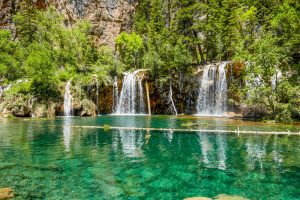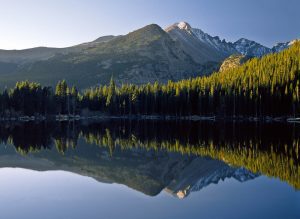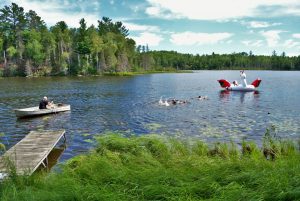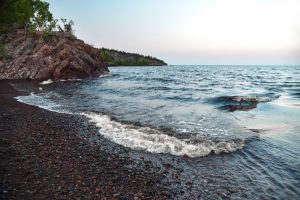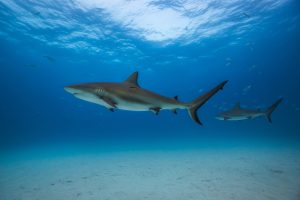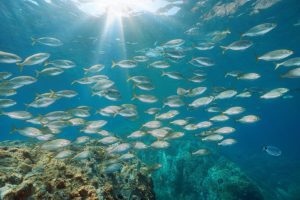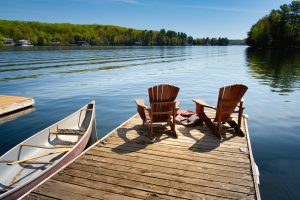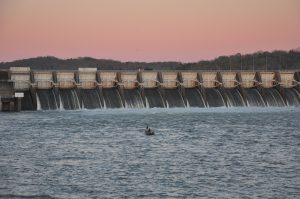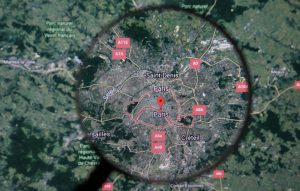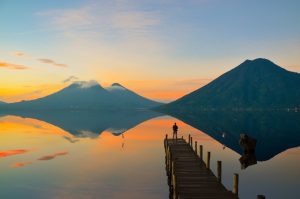The world is full of natural wonders – and among them are lakes. Did you know that the earth has over 300 million lakes, from big to red to man-made?
In the United States, there are about 245 natural freshwater lakes and about 53,119 artificial lakes.
Out of thousands of lakes in the US, this article gathers the top 30 largest lakes by area.
The largest lake in the United States is Lake Superior, with a surface area of 31,700 sq mi. In a nutshell, this article lists eight man-made lakes and 22 natural lakes.
Table of Contents
The Largest Lakes in the United States
| Number | Lake | Square miles |
|---|---|---|
| 1 | Lake Superior | 31,700 |
| 2 | Lake Huron | 23,000 |
| 3 | Lake Michigan | 22,300 |
| 4 | Lake Erie | 9,910 |
| 5 | Lake Ontario | 7,340 |
| 6 | Great Salt Lake | 2,117 |
| 7 | Lake of the Woods | 1,679 |
| 8 | Iliamna Lake | 1,014 |
| 9 | Lake Oahe | 685 |
| 10 | Lake Okeechobee | 662 |
| 11 | Lake Pontchartrain | 631 |
| 12 | Lake Sakakawea | 520 |
| 13 | Lake Champlain | 490 |
| 14 | Becharof Lake | 453 |
| 15 | Lake St. Clair | 440 |
| 16 | Red Lake | 427 |
| 17 | Selawik Lake | 404 |
| 18 | Fort Peck Lake | 393 |
| 19 | Salton Sea | 347 |
| 20 | Rainy Lake | 345 |
| 21 | Teshekpuk Lake | 320 |
| 22 | Devils Lake | 300 |
| 23 | Toledo Bend Reservoir | 284 |
| 24 | Lake Powell | 251 |
| 25 | Kentucky Lake | 250 |
| 26 | Lake Mead | 247 |
| 27 | Naknek Lake | 242 |
| 28 | Lake Winnebago | 215 |
| 29 | Mille Lacs Lake | 207 |
| 30 | Flathead Lake | 192 |
1. Lake Superior – 31,700 square miles
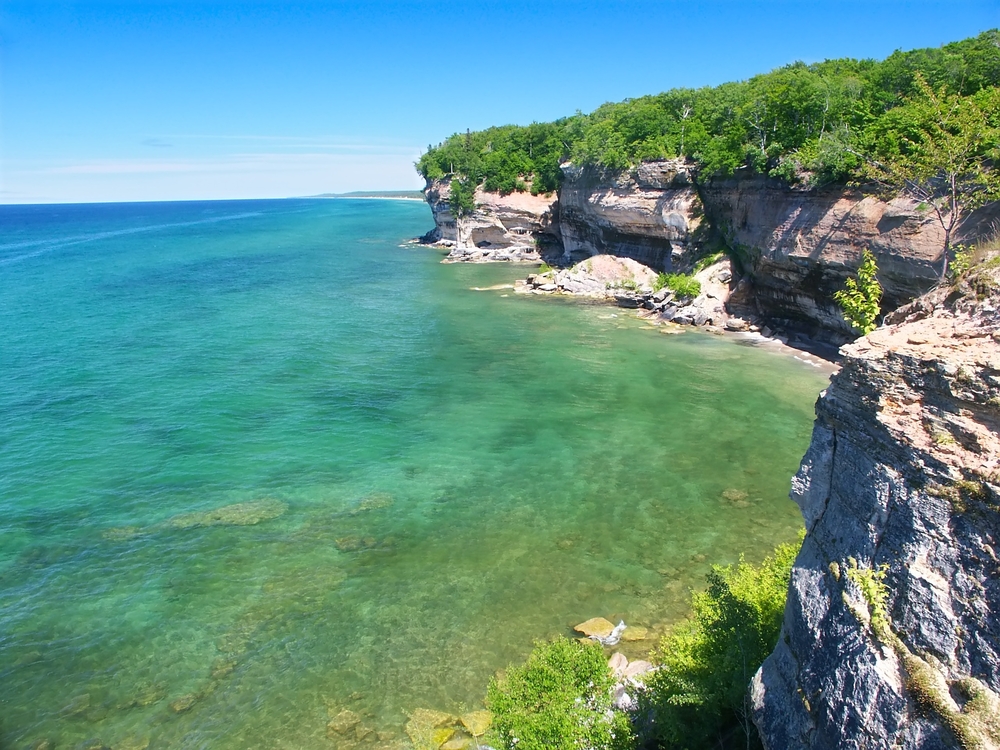
Size: 31,700 sq mi
State: Michigan, Minnesota, Wisconsin
Type: Natural, Freshwater, Glacial
Lake Superior is a freshwater lake that is part of the Great Lakes of North America. It is the largest lake in the United States with a surface area of 31,700 sq mi.
The lake spans a length of 350 mi and a width of 160 mi, bordering Ontario, Michigan, Wisconsin, and Minnesota.
Moreover, it is the third-largest lake by water volume with a total of 2,900 cubic miles.
2. Lake Huron – 23,000 square miles
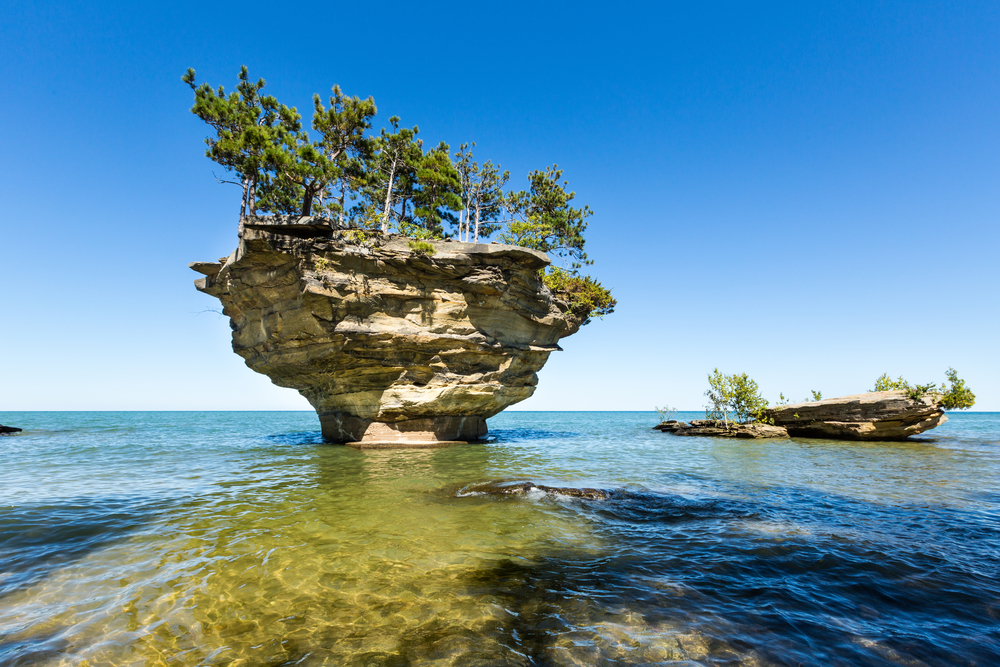
Size: 23,000 sq mi
State: Michigan
Type: Natural, Glacial
Another lake of the Great Lakes of North America is Lake Huron, located in Michigan and Ontario, Canada.
It is a natural lake with a total surface area of 23,000 sq mi and a maximum depth of 750 ft.
Manitoulin island can be found in Lake Huron, which is within the regions of Ontario. Interestingly, there were over a thousand known sunken ships in the lake, primarily in Saginaw Bay and Georgian Bay, among others.
3. Lake Michigan – 22,300 square miles
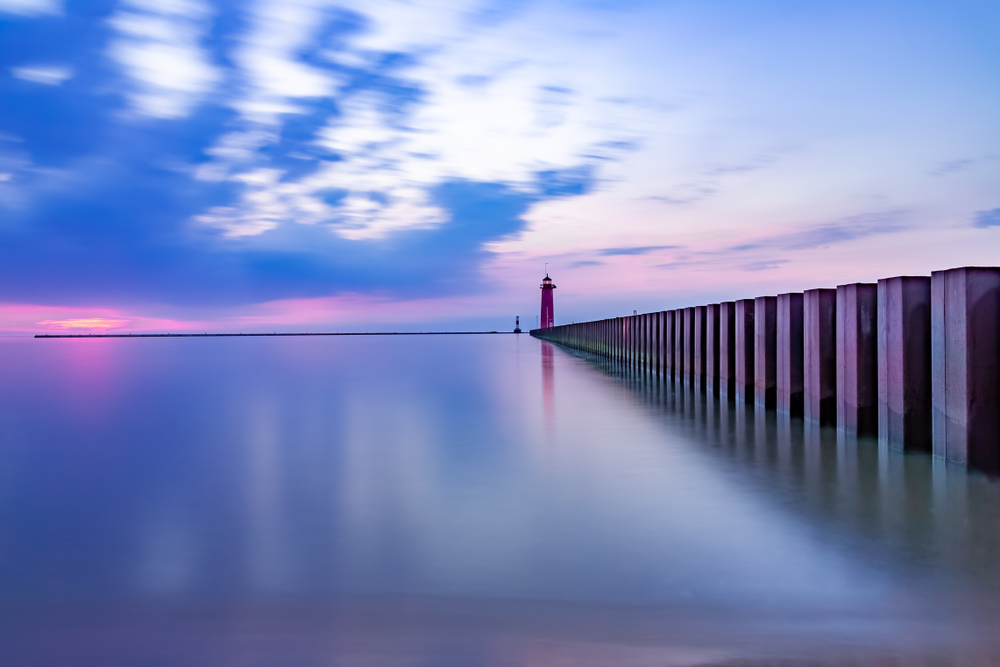
Size: 22,300 sq mi
State: Illinois, Indiana, Michigan, Wisconsin
Type: Natural, Glacial
Located within the borders of Illinois, Indiana, Michigan, and Wisconsin, Lake Michigan is the third-largest lake by area and the second-largest by water volume.
It is among the Great Lakes of North America with a surface area of 22,300 sq mi, a maximum length of 307 mi, and a maximum width of 118 mi.
The total water volume is 1,180 cu mi with a known residence time of 99 years. It is known that Hopewell Native Americans once lived along the lake and the first person to dive at the base of the lake was J. Val Lump.
4. Lake Erie – 9,910 square miles
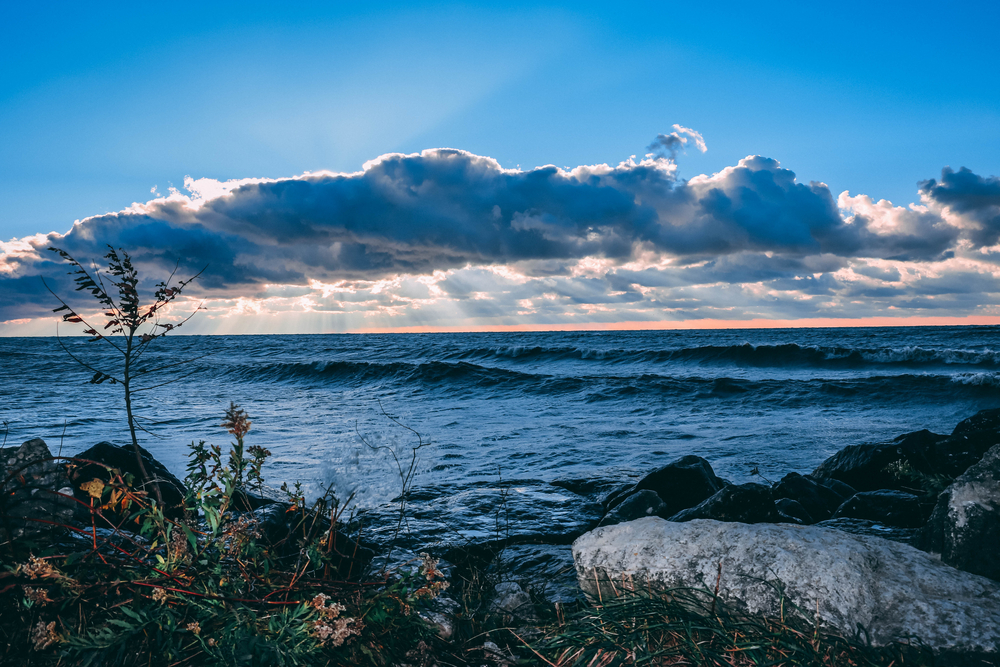
Size: 9,910 sq mi
State: Michigan, New York, Ohio, Pennsylvania
Type: Natural, Glacial
Lake Erie is also part of the Great Lakes of North America that shares borders with Ontario and four US states: Michigan, New York, Ohio, and Pennsylvania.
It is the fourth-largest lake with a surface area of 9,910 sq mi with a depth of 210 ft.
There are more than 24 islands in the lake including Kelleys Island, Pelee Island, and South Bass Island.
Tourists come to the lake for recreational activities including diving, biking, and fishing.
5. Lake Ontario – 7,340 square miles
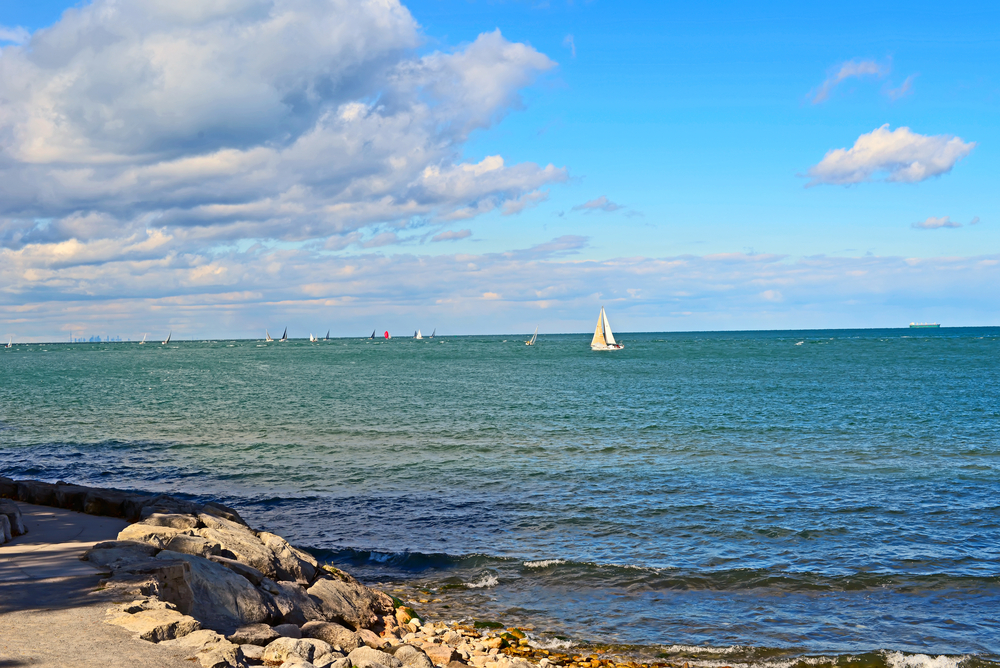
Size: 7,340 sq mi
State: New York
Type: Natural, Glacial
The fifth and last of the Great Lakes of North America is Lake Ontario. It is located in southern New York and in the north, west, and south regions of Ontario.
Its primary inflow and outflow are the Niagara River and St. Lawrence River, respectively. It is the fifth-largest lake in the US with a surface area of 7,340 sq mi.
6. Great Salt Lake – 2,117 square miles
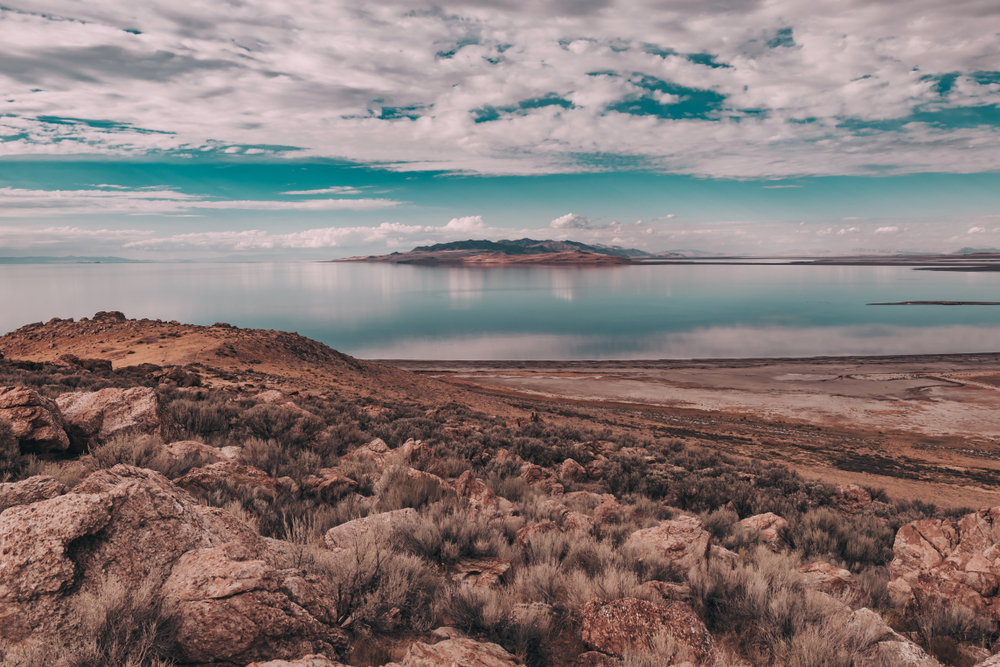
Size: 2,117 sq mi
State: Utah
Type: Natural, Saltwater, Endorheic
Located in the west, Great Salt Lake is the sixth largest lake by volume with a surface area of 2,117 sq mi.
It is also the largest saltwater lake in South America and North America.
The lake spans across Utah with a maximum length of 75 mi and a maximum width of 26 mi. The rivers Bear, Jordan, and Weber are its primary inflows.
7. Lake of the Woods – 1,679 square miles
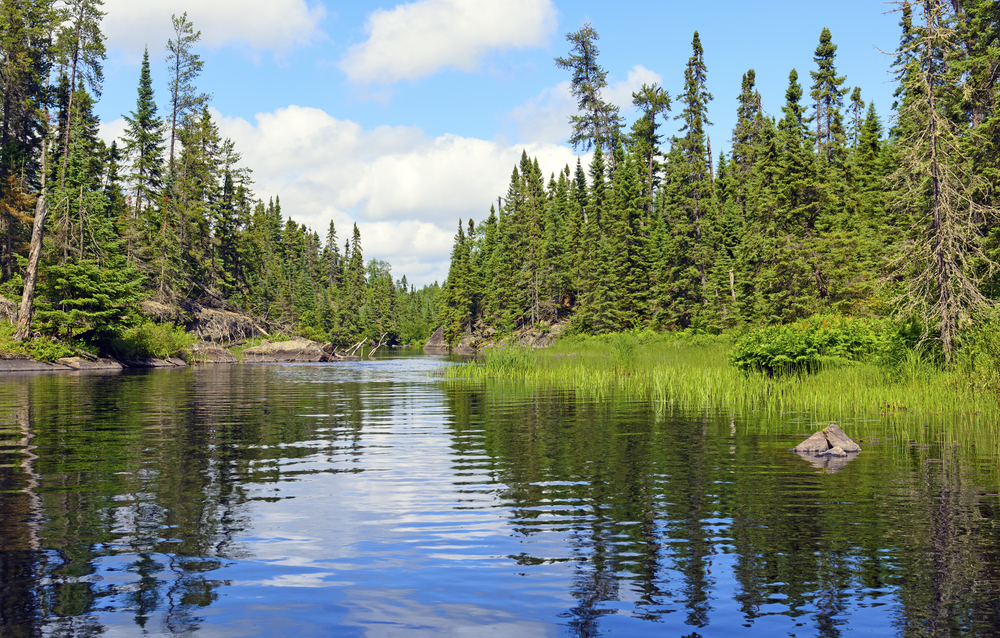
Size: 1,679 sq mi
State: Minnesota
Type: Natural, Glacial
Lake of the Woods is situated in Ontario and Manitoba in Canada, as well as the state of Minnesota in the US.
It spans 68 mi long and 59 mi wide, with a total surface area of 1,679 sq mi.
There are about 14,632 islands and several communities near the lake. The lake offers various recreational activities including camping, fishing, and sailing.
8. Iliamna Lake – 1,014 square miles
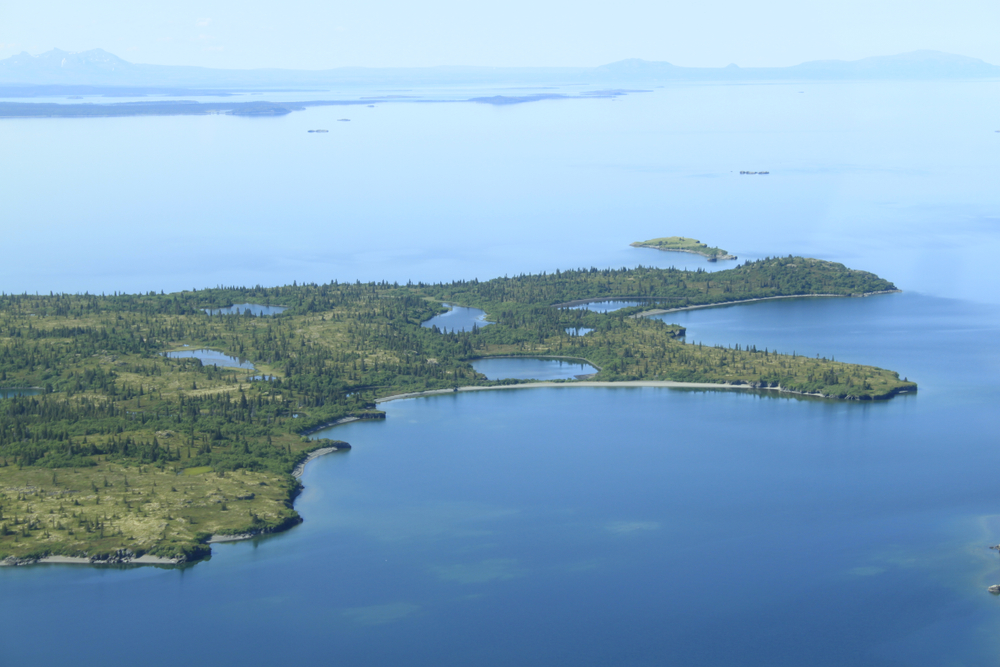
Size: 1,014 sq mi
State: Alaska
Type: Natural, Oligotrophic
Iliamna Lake occupies the southwestern regions of Alaska with a surface area of 1,014 sq mi.
The lake is fed by several primary inflows including Copper River, Newhalen River, Iliamna River, and Pile River.
This lake is known by many for sport fishing and the famous Iliamna Lake Monster. There are several villages situated by the lake such as Iliamna, Newhalen, and Landing, among others.
9. Lake Oahe – 685 square miles
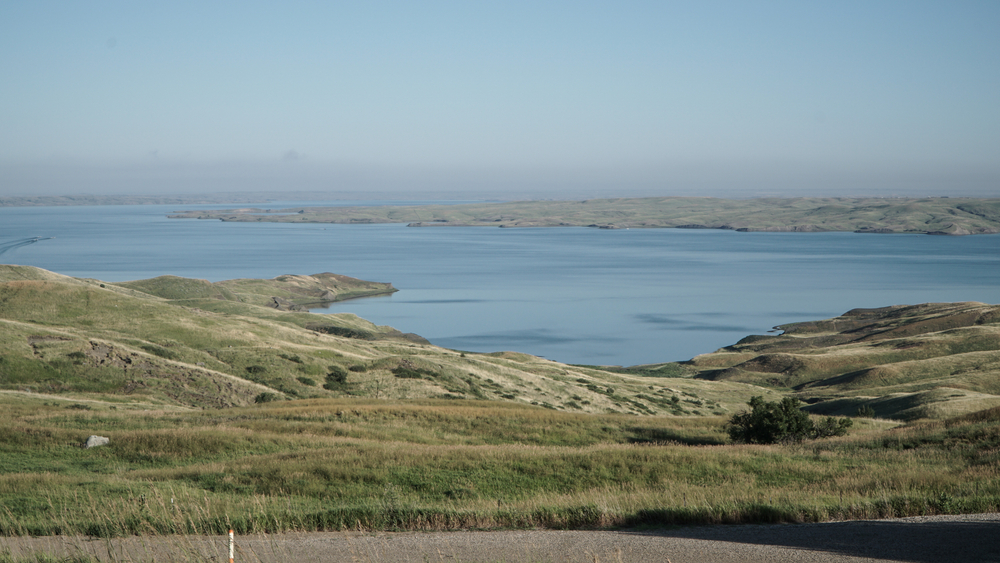
Size: 685 sq mi
State: North Dakota, South Dakota
Type: Man-made, Reservoir
Lake Oahe is the largest man-made lake by area and the fourth-largest reservoir by volume in the country.
It has a surface area of 685 sq mi, spanning across South and North Dakota.
More than 1 million visitors come to the lake for its public recreational opportunities. People can ride a boat, camp, have a picnic, hike, hunt, and fish.
10. Lake Okeechobee – 662 square miles
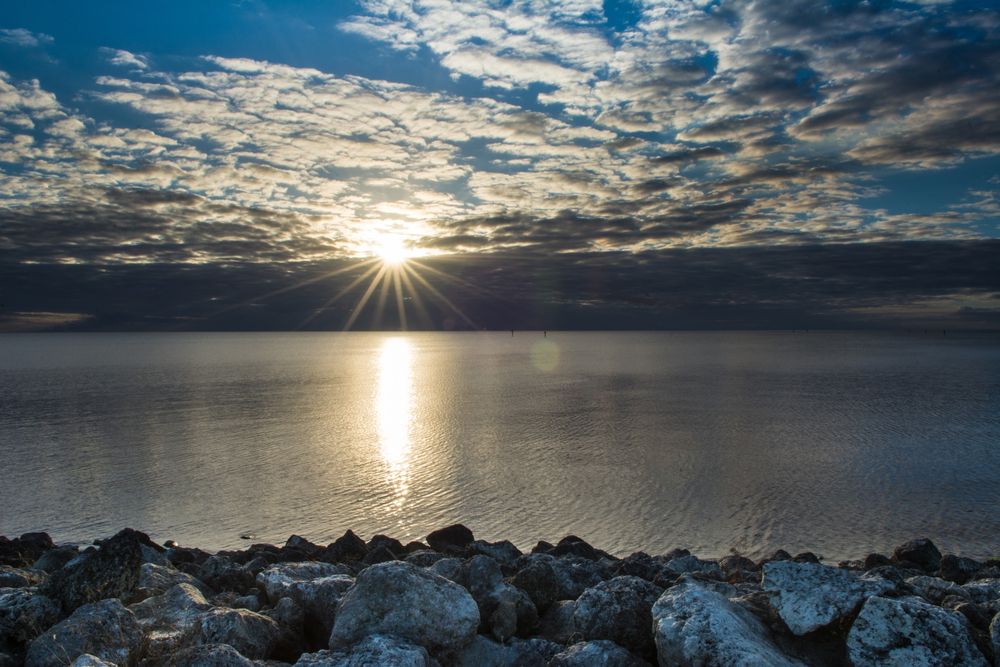
Size: 662 sq mi
State: Florida
Type: Natural
Lake Okeechobee is Florida’s largest lake and is 36 mi long and 29 mi wide. The lake occupies a total surface area of 662 sq mi with 1 cu mi water volume.
The lake has several authorized uses including water supply, recreation, and fish enhancement.
For recreational purposes, people can go fishing for some common fish including largemouth bass and bluegill.
11. Lake Pontchartrain – 631 square miles
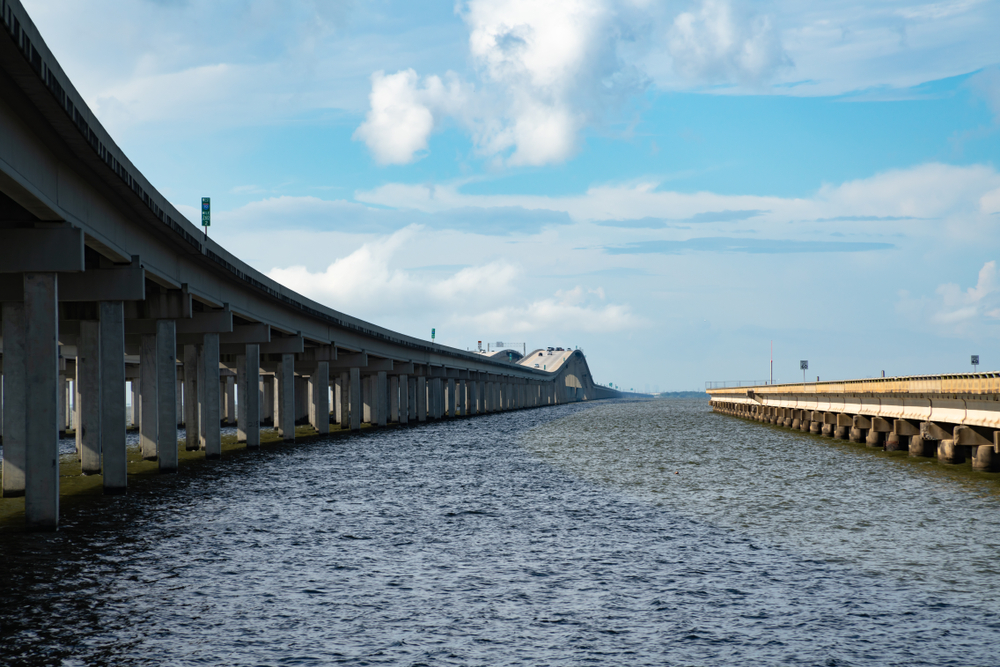
Size: 631 sq mi
State: Louisiana
Type: Natural, Estuary, Saltwater
Covering a surface area of 630 sq mi, Lake Pontchartrain is the 11th largest lake by area in the US.
It has a maximum length of 40 mi and a minimum width of 24 mi.
It is an estuary located in six parishes and also serves as a link to the Gulf of Mexico and Chef Menteur Pass.
Unfortunately, several incidents have happened in the lake, including bus and airplane crashes.
12. Lake Sakakawea – 520 square miles
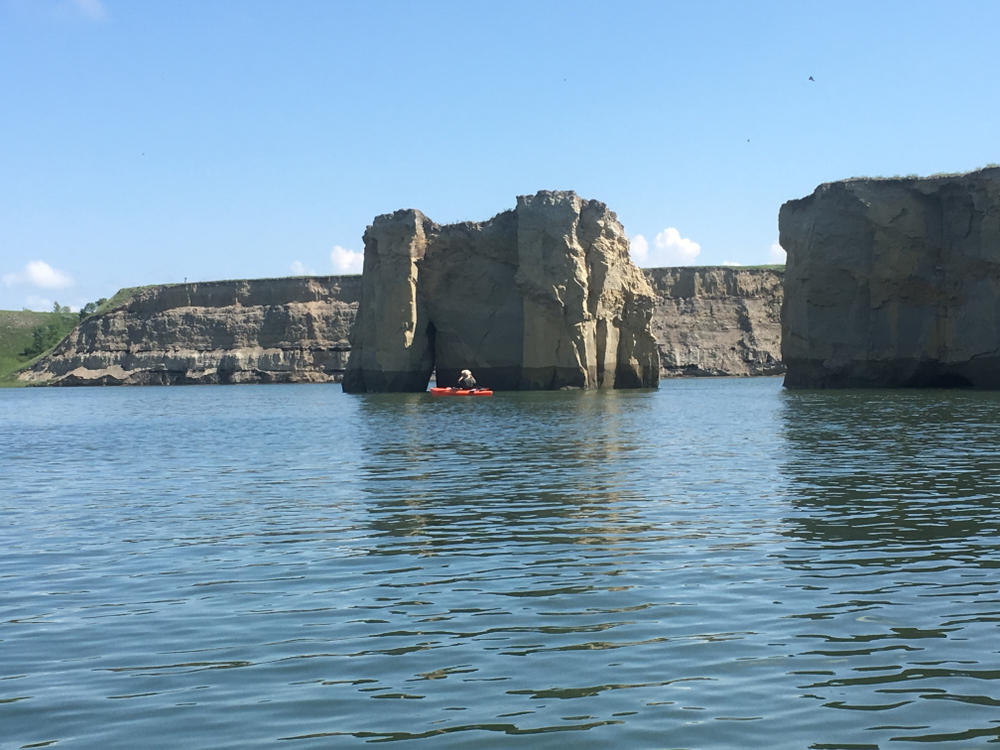
Size: 520 sq mi
State: North Dakota
Type: Man-made, Reservoir
Lake Sakakawea is the second-largest man-made lake and the 12th largest lake by area in the country.
It is found in the Missouri River, which serves as its primary inflow and outflow.
The reservoir was built in 1953 when Garrison Dam was being built. Today, people go to the lake for camping, fishing, and hiking.
13. Lake Champlain – 490 square miles
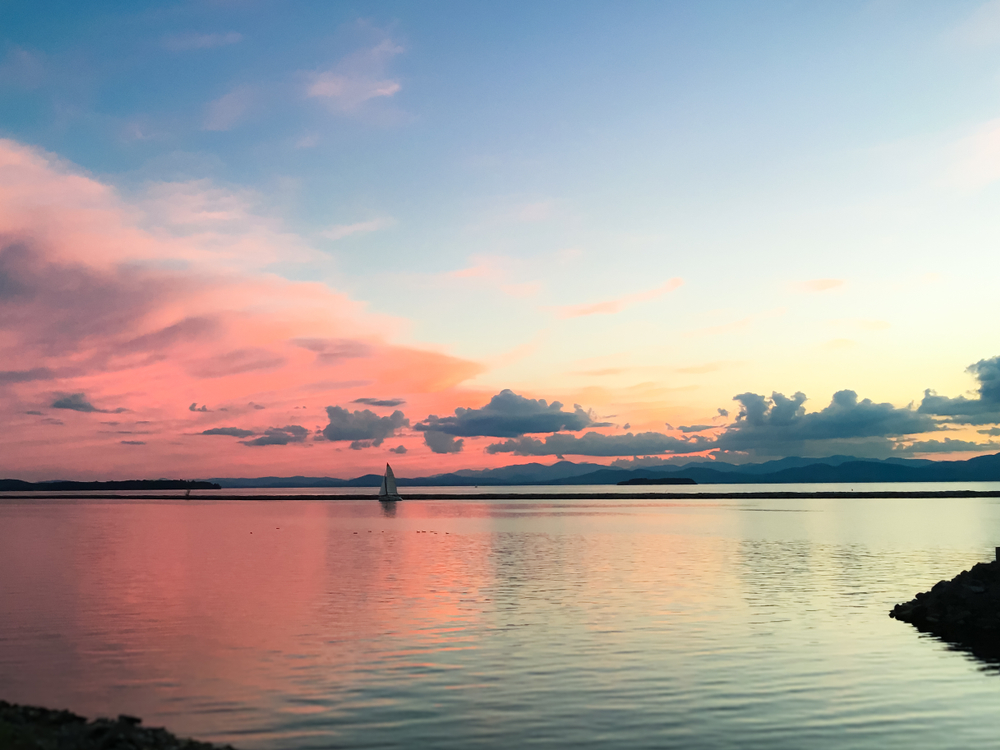
Size: 490 sq mi
State: New York, Vermont
Type: Natural, Freshwater
The Canadian province of Quebec and the US states of New York and Vermont borders Lake Champlain.
It is the 11th largest lake with a surface area of 490 sq mi, spanning 107 mi long and 14 mi wide.
Lake Champlain is often referred to as the Sixth Great Lake because of the several bodies of water connected to it.
There are about 80 islands found in the lake from which visitors can visit lighthouses and parks.
14. Becharof Lake – 453 square miles
Size: 453 sq mi
State: Alaska
Type: Natural
Covering a surface area of 453 sq mi, Becharof Lake is the second-largest lake in Alaska. The lake was named after Dmitry Bocharov and was later changed to Becharof for a more Americanized word.
It is located in the Lake and Peninsula Borough of Alaska with a surface elevation of 13 ft.
Moreover, it spans a length of 37 mi and is considered the eighth largest lake by volume in the country.
15. Lake St. Clair – 440 square miles

Size: 440 sq mi
State: Michigan
Type: Natural, Freshwater
Lake St. Clair is the 15th largest lake in the US that was named after Saint Clare of Assisi, an Italian Saint.
It settles between the state of Michigan and the province of Ontario in Canada with a surface area of 440 sq mi.
The lake serves as a link to two Great Lakes of North America: Lake Erie and Lake Huron. Boat clubs and the beaches along the lake are some of the most common places to visit here.
16. Red Lake – 427 square miles
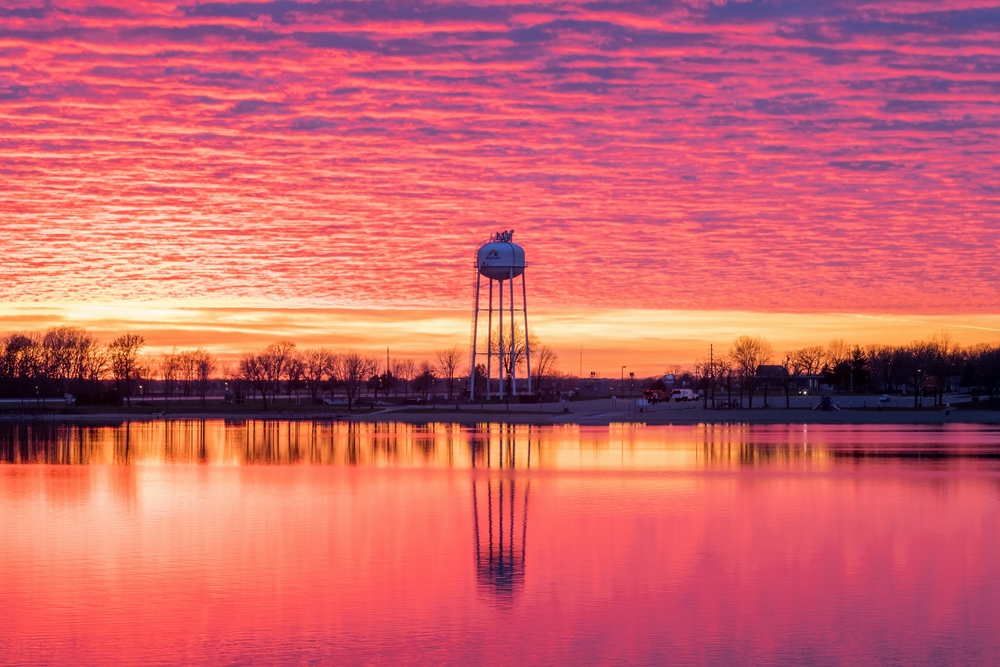
Size: 427 sq mi
State: Minnesota
Type: Natural
Located in Beltrami County of Minnesota, Red Lake is known for its red waters, which are divided into Upper Red Lake and Lower Red Lake.
Lower Red Lake is occupied by Ponemah, a census-designated place (CDP) with a recorded population of about 724.
The lake serves as a home to several fish species including black crappie, lake trout, and rock bass, to name a few.
Moreover, it is also where the Red Lake River is found
17. Selawik Lake – 404 square miles
Size: 404 sq mi
State: Alaska
Type: Natural
Selawik Lake lies in the regions of Northwest Arctic Borough in Alaska with a surface area of 404 sq mi.
It is the third-largest lake in the state with a length of 31 mi.
It is believed the lake was among the several explorations of Sir John Franklin, a British Arctic explorer.
The Selawik National Wildlife Refuge, a wildlife refuge for more than 180 bird species, is also located near the lake.
18. Fort Peck Lake – 393 square miles
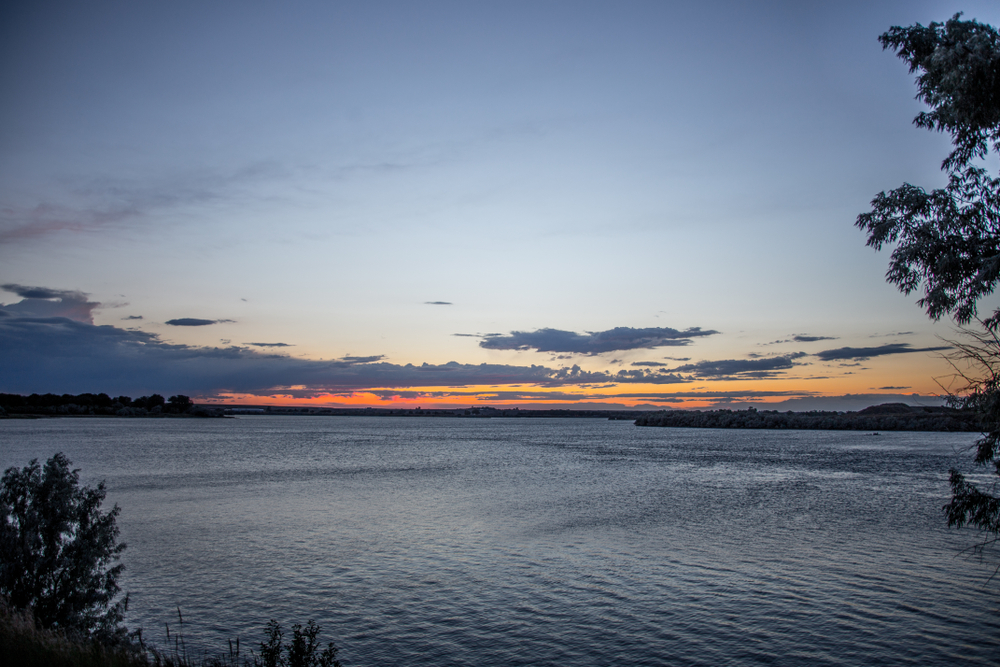
Size: 393 sq mi
State: Montana
Type: Man-made, Reservoir
Fort Peck Lake is the fifth-largest man-made lake in the country with a volume of 23.050977 km3.
It is the 18th largest lake by area with a total surface area of 393 sq mi and a maximum length of 134 mi.
It is fed by the Missouri River upon building the dam in the 1930s. Interestingly, it was one of Jurassic Park III scene locations and is also a popular attraction with its nearby refuge, Charles M. Russell National Wildlife Refuge.
19. Salton Sea – 347 square miles

Size: 347 sq mi
State: California
Type: Man-made, Endorheic
Located in Colorado Desert Imperial and Riverside County of California, the Salton Sea covers a surface area of 347 sq mi with a depth of 43 ft.
Alamo River, New River, and Whitewater River are among the bodies of water entering the Salton Sea.
Some of the census-designated places (CDP) located in the lake are Bombay Beach, Salton City, and Salton Sea Beach, to name a few.
20. Rainy Lake – 345 square miles
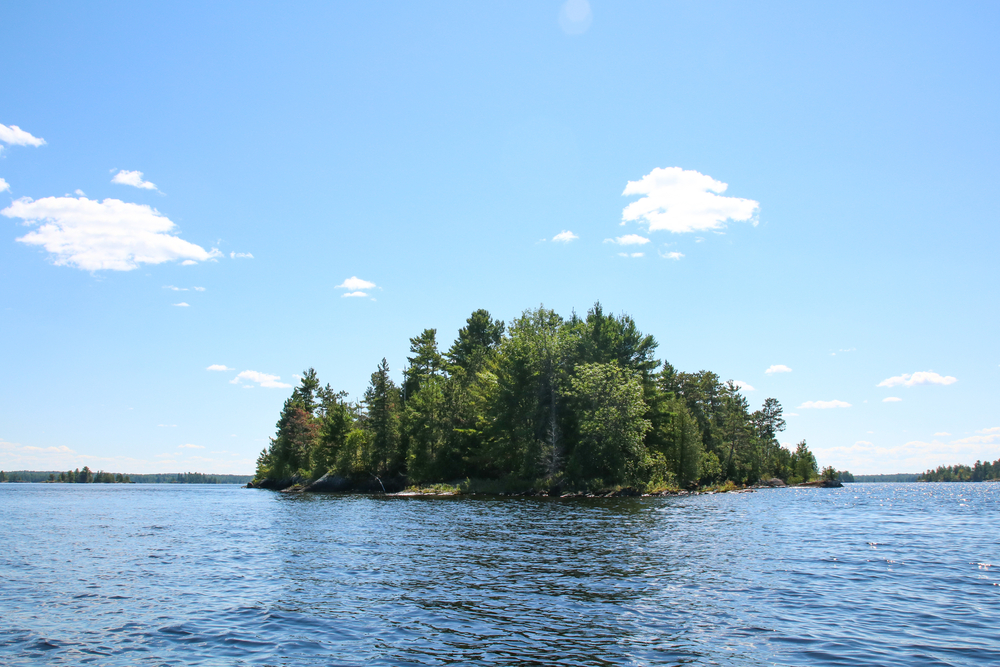
Size: 345 sq mi
State: Minnesota
Type: Natural, Freshwater
Rainy Lake lies between the Canadian province of Ontario and the state of Minnesota with a surface area of 345 sq mi.
It was formed by the remains of Lake Agassiz, a lake that used to be a large glacial lake.
At present, it is a popular tourist attraction for its fishing activities and camping sites in Voyageurs National Park.
In winter, people come to the lake for snow activities such as ice fishing, snowshoeing, and skiing.
21. Teshekpuk Lake – 320 square miles
Size: 320 sq mi
State: Alaska
Type: Natural, Thermokarst
Situated in the North Slope Borough of Alaska, Teshekpuk Lake has a surface area of 320 sq mi.
The lake is called several names including Tasyukpun, Tasipak, and Tasirkpuk Lake.
It is one of the largest thermokarst-type lakes in the world with a width of 22 mi and a surface elevation of 7 ft.
A variety of wildlife inhabits the lake including various fish and shorebirds but has been severely affected by human activities, particularly oil and gas drilling.
22. Devils Lake – 300 square miles
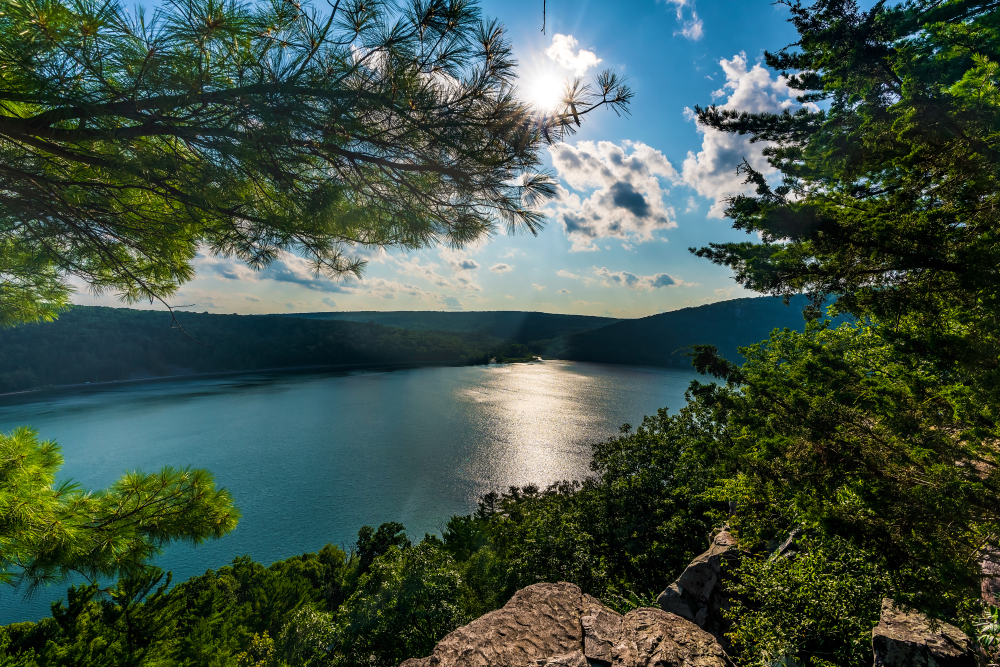
Size: 300 sq mi
State: North Dakota
Type: Natural, Endorheic basin
Devils Lake is among North Dakota’s largest lakes with a surface area of 300 sq mi and a depth of over 59 ft.
Its name was taken from the Dakota people’s Siouan language, with the words “mni” and “wak’áŋ”, meaning water and spirit/sacred, respectively.
However, the name was misunderstood by Americans and was given the interpretation of Bad Spirit Lake, hence, Devils Lake.
Today, it is mostly visited for fishing, ice fishing, the White Horse Hill National Game Preserve, and the Grahams Island State Park.
23. Toledo Bend Reservoir – 284 square miles
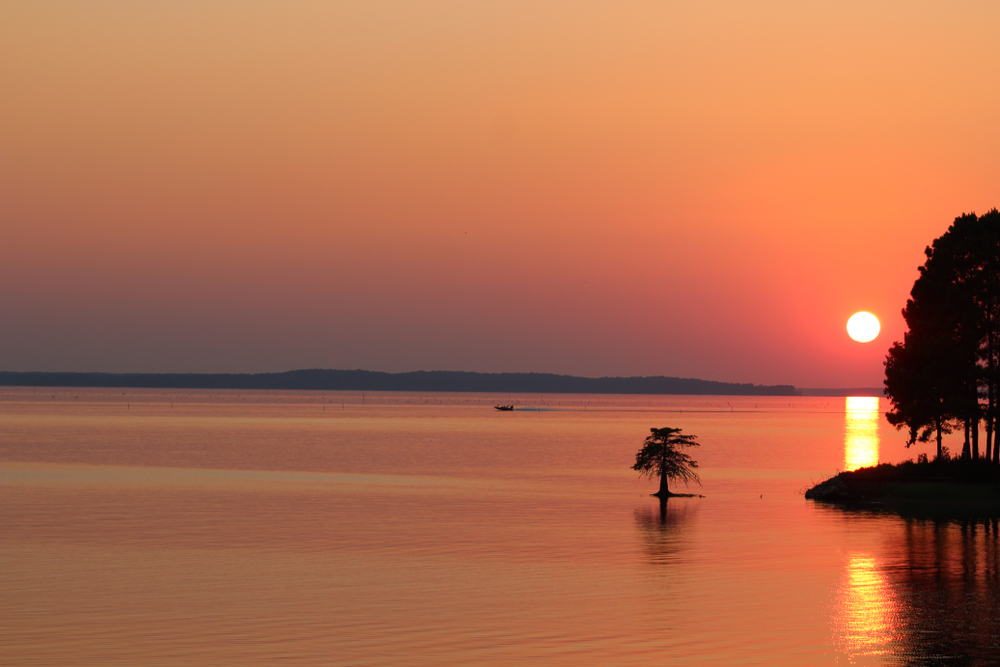
Size: 284 sq m
State: Louisiana, Texas
Type: Man-made, Reservoir
Located between Louisiana and Texas, Toledo Bend Reservoir is the largest lake in the southern US.
It is fed by the Sabine River and covers a surface area of 284 sq mi with a maximum length of 65 mi.
Moreover, it spans a total shore length of 1,265 mi which is great for water activities like swimming, fishing, and boating.
It is also a place for camping and going on a picnic.
24. Lake Powell – 251 square miles
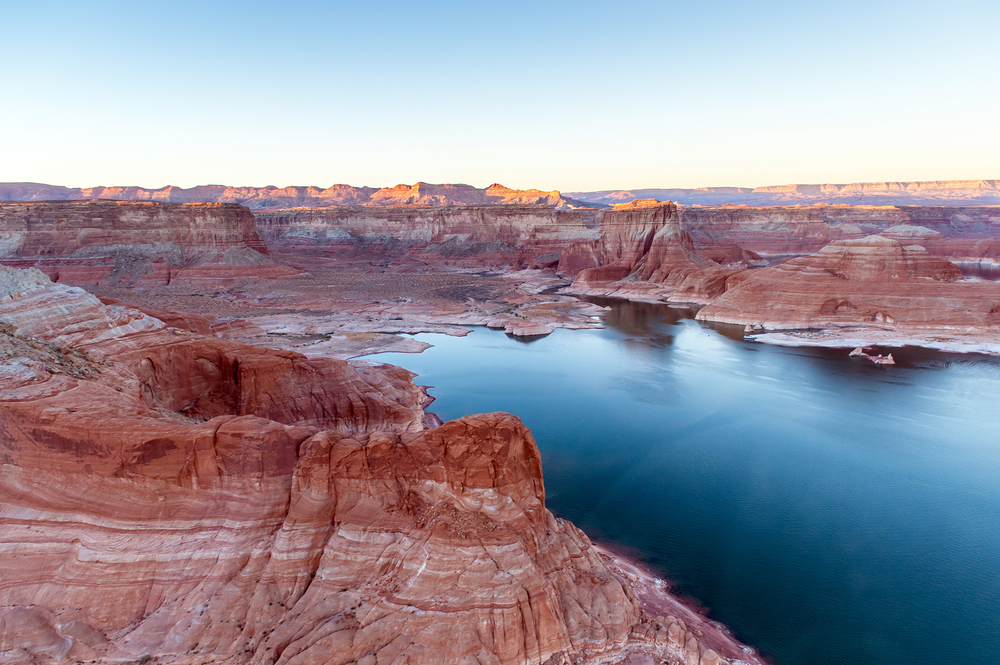
Size: 251 sq mi
State: Arizona, Utah
Type: Man-made, Reservoir
Lake Powell lies between Arizona and Utah, occupying a surface area of 251 sq mi. The Colorado River, Escalante River, Green River, and San Juan River flow through Lake Powell.
More than two million tourists come to the lake annually. The lake is a popular tourist attraction for its natural landmarks and distinct features including the Rainbow Bridge, Castle Rock, and Padre Bay.
25. Kentucky Lake – 250 square miles
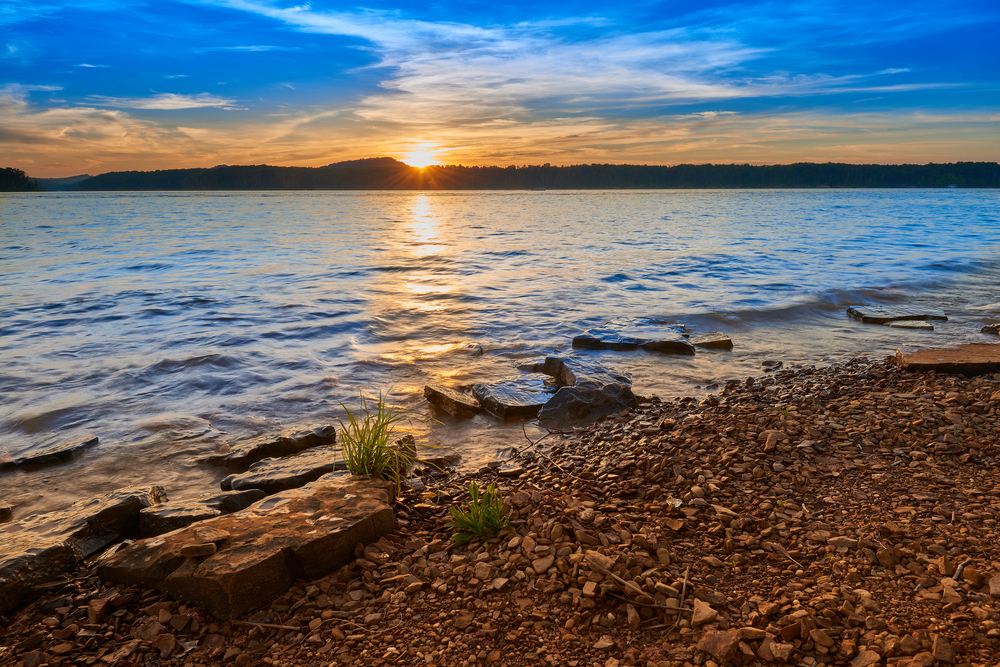
Size: 250 sq mi
State: Kentucky, Tennessee
Type: Man-made, Navigable reservoir
Kentucky lake is another man-made lake created to generate hydroelectricity. It occupies a surface area of 250 sq mi with more than a 2,000-mi shoreline in Kentucky and Tennessee.
The lake can take a maximum water volume of 4,008,000 acre-ft in a maximum depth of 75 ft.
Kentucky Dam Village State Resort Park and Kenlake State Resort Park are two state parks on the lake attracting tourists.
26. Lake Mead – 247 square miles
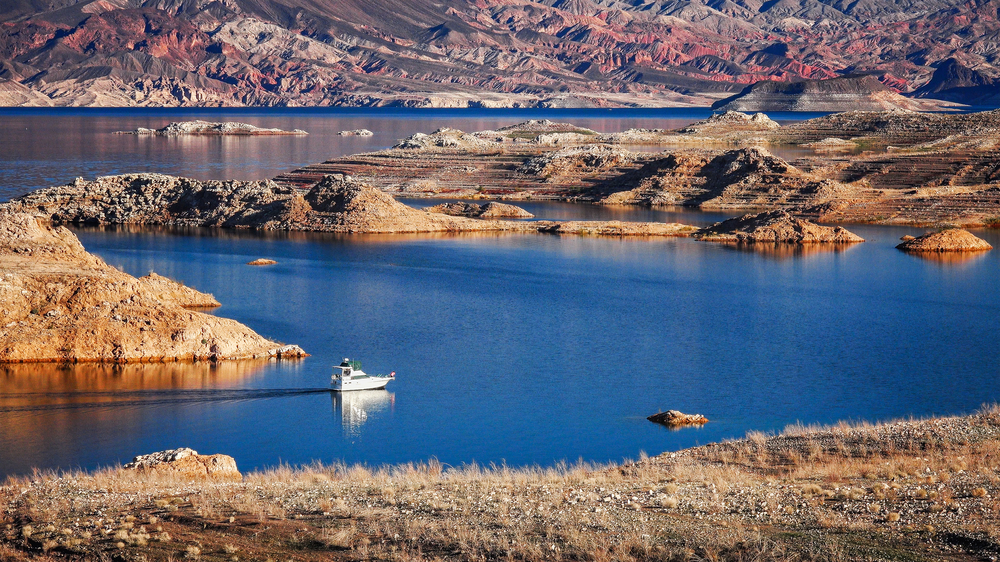
Size: 247 sq mi
State: Arizona, Nevada
Type: Man-made, Reservoir
Lake Mead is located in Clark County in Nevada and Mohave County in Arizona. It is a reservoir created by the Hoover Dam in the Black Canyon of the Colorado River.
The Colorado River serves as its primary inflow and outflow. It spans 759 mi of shoreline and a maximum length of 120 mi.
27. Naknek Lake – 242 square miles
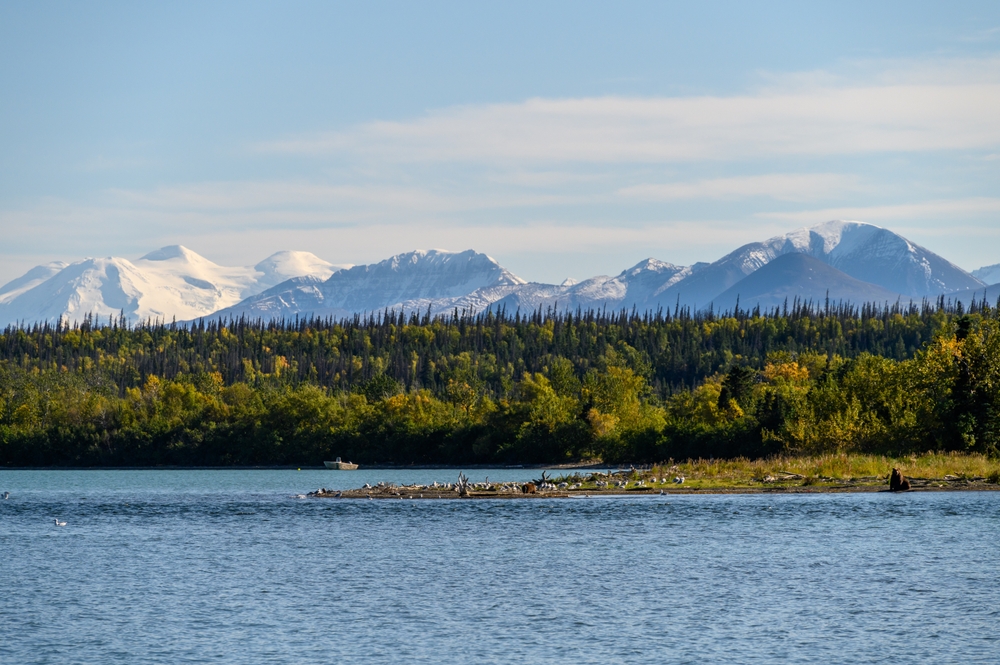
Size: 242 sq mi
State: Alaska
Type: Natural
Naknek Lake can be reached via Lake and Peninsula Borough and Bristol Bay Borough in Alaska.
It is situated within Katmai National Park and Preserve, covering an area of 242 sq mi.
Home to several wild animals including wolves, bears, and moose, it attracts people for sports fishing and sightseeing of bears wandering in Brooks Falls.
28. Lake Winnebago – 215 square miles
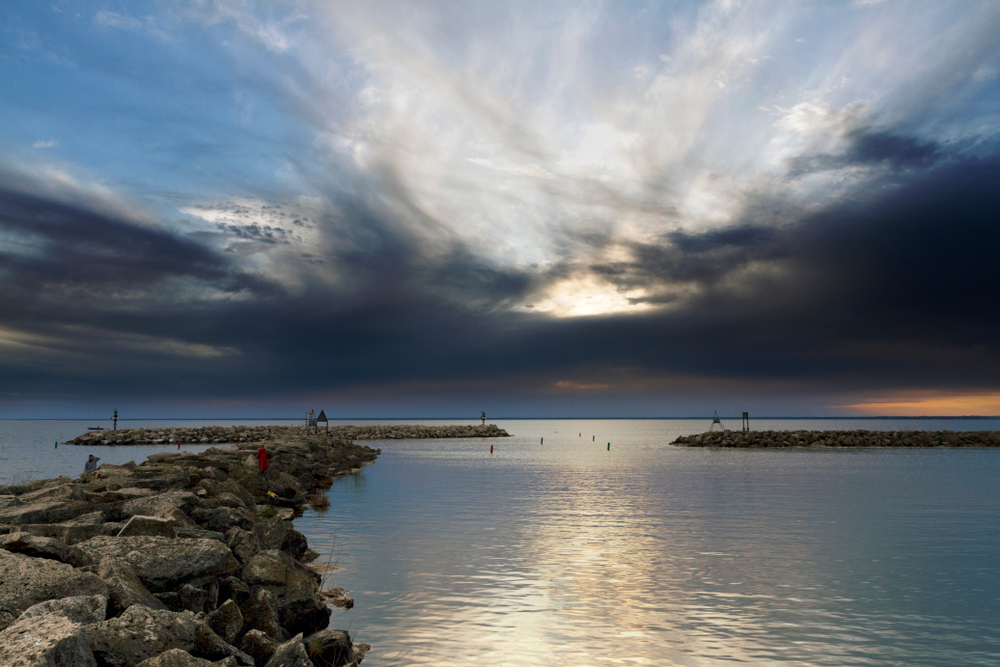
Size: 215 sq mi
State: Wisconsin
Type: Natural, Freshwater
Lake Winnebago is the largest freshwater lake in the state of Wisconsin, which can be found in several counties including Calumet, Fond du Lac, and Winnebago.
It covers an area of 215 sq mi with a length of 30 mi and a width of 10 mi.
The lake is fed by Fox River and Wolf River and serves nearby cities including Fond du Lac, Menasha, Neenah, and Oshkosh.
Because of its numerous events and countless activities, Lake Winnebago has become a favorite vacation spot.
29. Mille Lacs Lake – 207 square miles
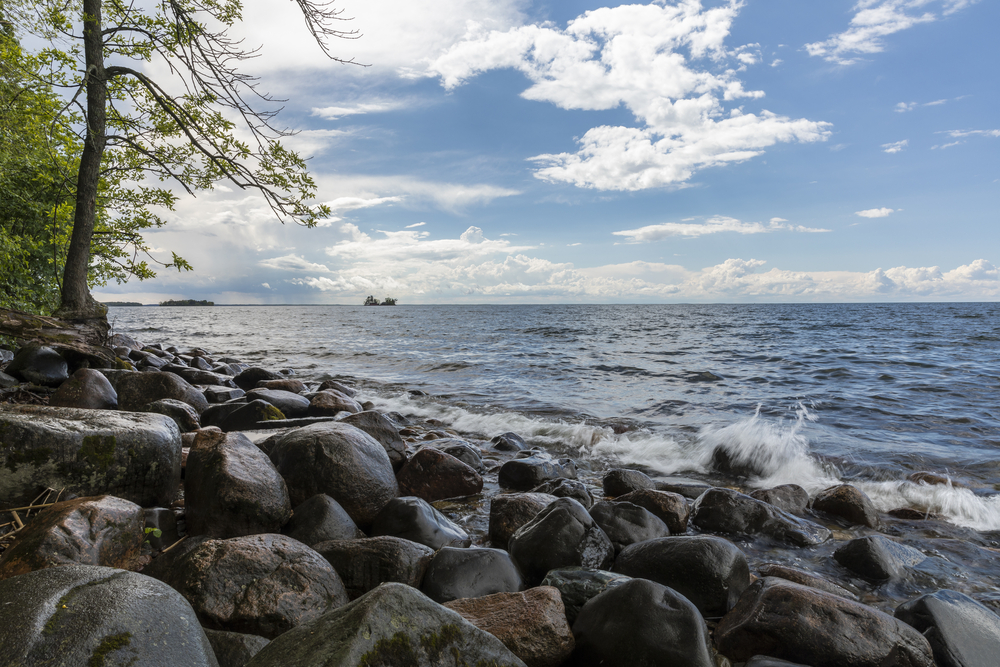
Size: 207 sq mi
State: Minnesota
Type: Natural, Moraine-dammed
Mille Lacs Lake is located within Aitkin, Crow Wing, and Mille Lacs counties of Minnesota. It has several islands and primary inflows including Garrison Creek, Peterson Creek, Seguchie Creek, and Thains’s River.
The name comes from French, which when translated means “a thousand lakes”. It was also named “Misi-zaaga’igan” which comes from the Ojibwe language, meaning “grand lake”.
30. Flathead Lake – 192 square miles
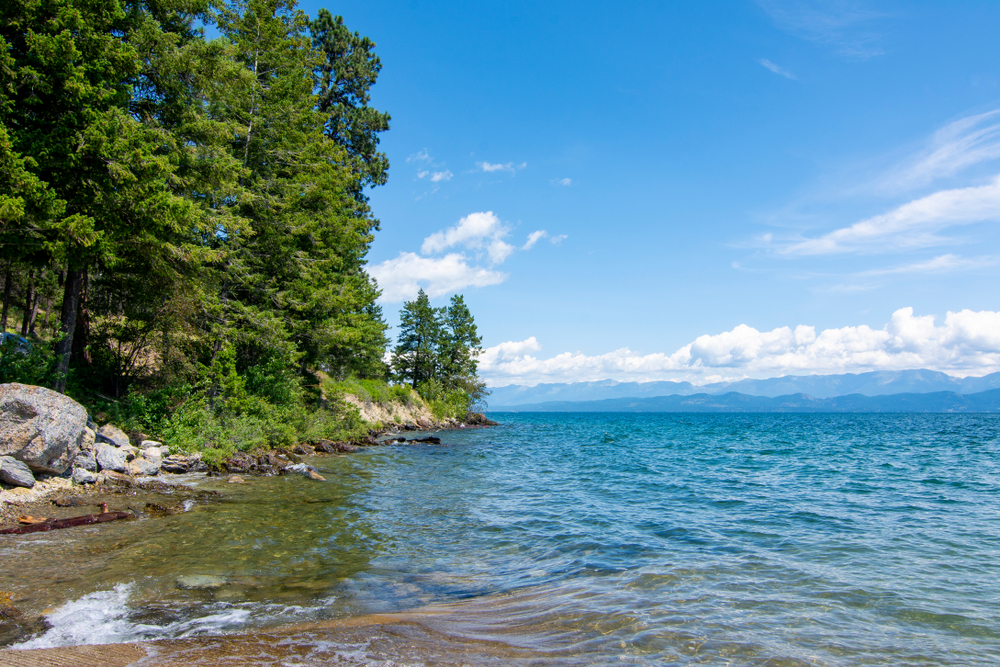
Size: 192 sq mi
State: Montana
Type: Natural
Located in Lake County and Flathead County in Montana, Flathead Lake is the 30th largest lake by area with a total surface area of 192 sq mi.
It spans a length of 27.3 mi and a width of 15.5 mi for over three years of residence time.
Several islands and settlements are situated on the banks of Flathead Lake. Residents can enjoy the semi-annual Mack Days fishing contest and learn about the various native and non-native species of fish.




